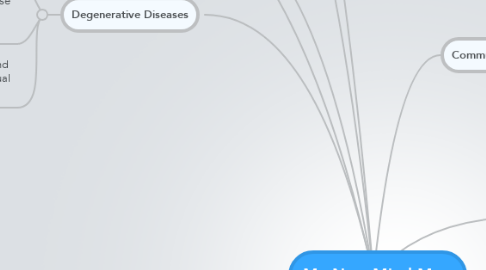My New Mind Map
by Taylor Anderson

1. Symbol: something that stands for something else
1.1. Aided: requires a device or accessory that is external to the body to transmit a message
1.2. Unaided: require only one's body
1.3. Static: do not require movement or change to understand meaning
1.4. Dynamic: require movement to understand the meaning
1.5. Iconicity: the degree to which symbols visually resemble what they refer to
1.6. Opaque: little resemblance to what it represents
2. Technique: the way in which messages are transmitted
2.1. Direction Selection: a direct motor act that is not dependent on time
2.2. Indirect Selection: Scanning, directed scanning, coded access
3. Selection Set
3.1. Fixed display: remains the same before and after a symbol is selectied
3.2. Dynamic Display: visual and change after a symbol is selected
3.3. Visual Scene Display: new type of display of pictures of virtual environments that represent that represent situations, places, or experiences
4. Purpose of Communication
4.1. Information transfer: to give and receive information
4.2. Social Closeness: develop relationships
4.3. Social Etiquette: being polite and conforming to the social conventions of the culture
5. Causes of Complex Communication Needs
5.1. Intuellectual disability: having significant limitations in both intellectual functionally and adaptive skills
5.2. Cerebral Palsy: neuromotor impairment resulting from trauma or damage to the developing child before, during, or soon after birth
5.3. Autism Spectrum Disorders (ASD): group of developmental disorders characterized by impaired social interactions, difficulty with verbal and nonverbal communication, and limited interests
5.4. Childhood Apraxia of Speech: a speech disorder characterized by inability to control the purposeful speech movements and sequences of speech movements
5.5. Traumatic Brain Injury: an acquired injury to the brain caused by a traumatic event
5.6. Stroke: when blood supply to part of te brain is interrupted or when a blood vessel in the brain ruptures
6. Degenerative Disease
7. Degenerative Diseases
7.1. Amyotrophic Lateral Sclerosis: ALS/Lou Gehrig: rapldly progressive, deterioration of speech or motor skills
7.2. Parkinson's Disease: slowly progressive disease of the basal ganglia in the central nervous system
7.3. Dementia: caused by Alzheimer's disease and Huntington's, Significantly impaired intellectual functioning
8. Augmentmentative and Alternative Communication: AAC, area of research that attempts to study and compensate for the impairments, activity limitations, and particpation restrictions of individuals with severe disorders of speech-language production/comprehension
8.1. Multimodal: a combination of communication modalities to meet their intended communication goals
8.2. Complex Communication Needs: CCN, importance of speech, language, and cognitive abilities rather than focusing on the disorder
8.3. Speech generating device: produce words and phrases as an alternative to speaking in situations where he/she cant be understood
8.4. AAC system: four components used to enhance communication
9. Comprehensive AAC Assesment:
9.1. Oppurtunity Barriers: imposed by other people and prevent an individual's participation in communication activities
9.2. Access Barriers: also prevent participation in communication activities, but come from the capabilities, attitudes, and resources of the person using AAC
9.3. Multidisciplinary Team: professionals that conducts the AAC assessment
10. Communicatio Competence
10.1. Emerging Communication -> Context-Dependent communication -> independent communication
10.2. Social Roles: a role each person plays in society


